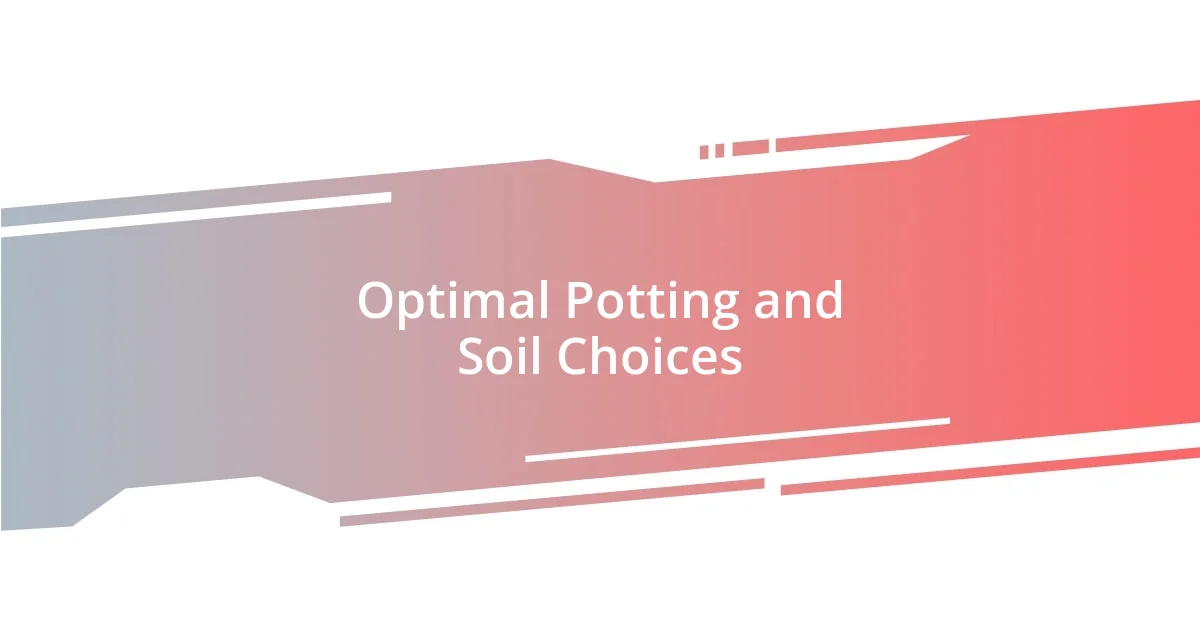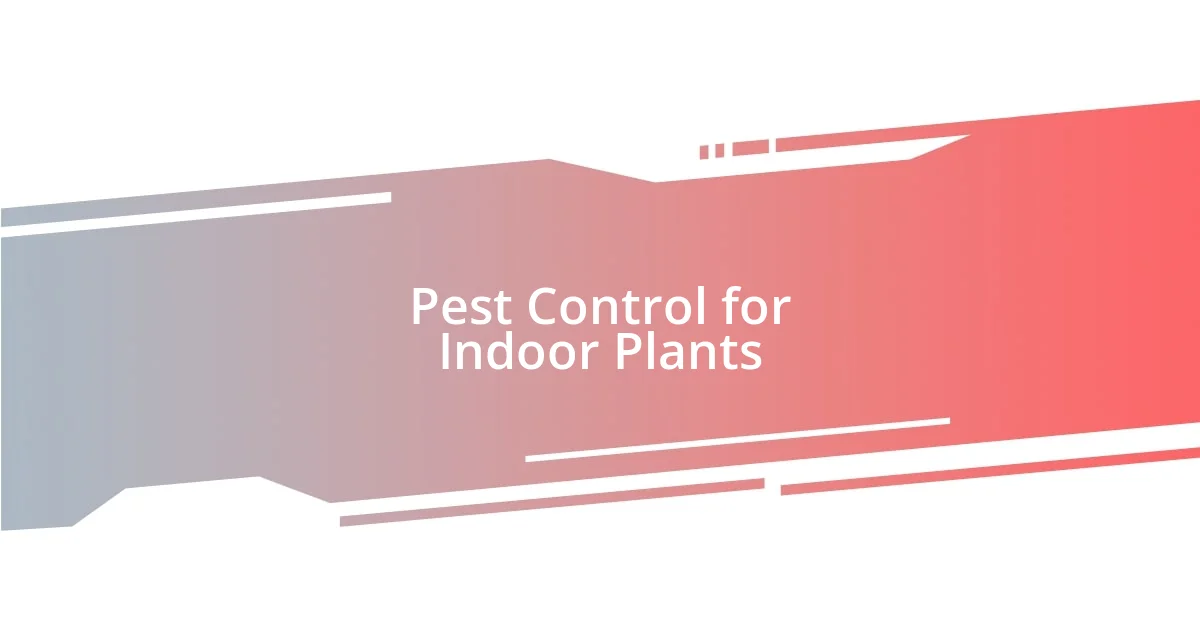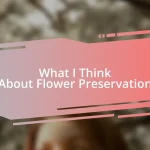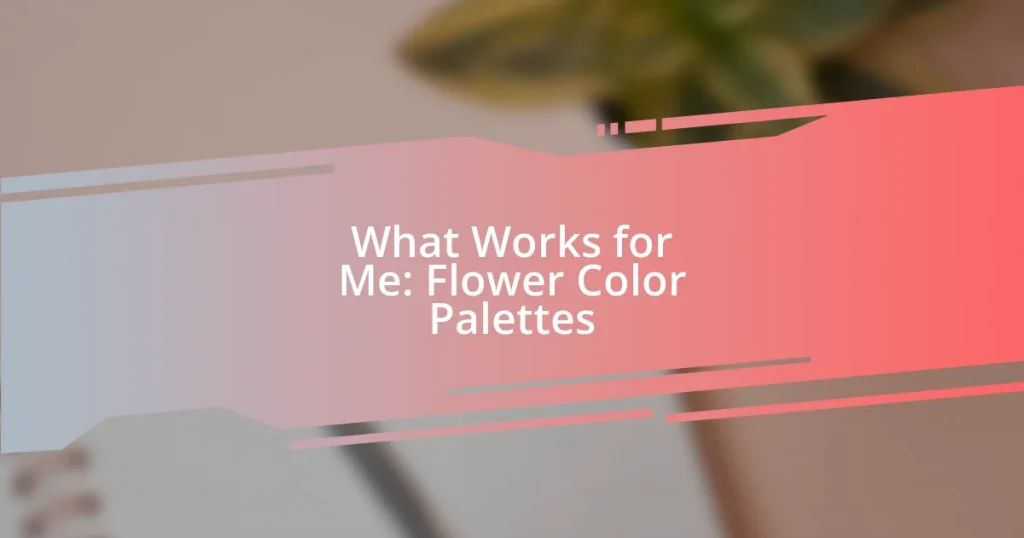Key takeaways:
- Understanding individual plant needs, including watering preferences and light conditions, is crucial for healthy indoor gardening.
- Choosing the right plants based on environmental factors and personal care abilities leads to greater success and enjoyment as a plant parent.
- Adjusting care practices with changing seasons—like modifying watering schedules and considering outdoor exposure—helps maintain optimal plant health.

Understanding Indoor Plant Needs
Each indoor plant has its own unique requirements, and understanding these needs is crucial for their thriving. When I first began my plant journey, I remember the excitement of bringing home my first snake plant. Little did I know, it thrived on neglect and low light, which was perfect for my busy lifestyle. How fascinating is it that some plants can flourish in conditions you wouldn’t expect?
Watering is another aspect to consider; it’s surprisingly easy to overdo it. I recall a time when my overzealous watering routine left my beloved pothos looking sad and droopy. Now, I always check the soil moisture before deciding to water. Isn’t it comforting to know that just a simple touch can tell you so much about your plant’s needs?
Lighting conditions can also vary drastically from room to room. For instance, my peace lily seems to bask in the bright, indirect sunlight of my living room, while my zz plant is perfectly content in the corner with very little light. Have you ever noticed how some plants seem to signal their happiness or distress? Observing these subtle cues is part of the joy of indoor gardening and is essential for nurturing your green companions.

Choosing the Right Indoor Plants
Choosing the right indoor plants can significantly impact your success as a plant parent. I remember the first time I wandered into a plant shop, feeling overwhelmed by the sheer variety of options. Initially, I gravitated toward colorful flowering plants, drawn in by their beauty, but quickly discovered that many of them required more care than I was ready to provide. It’s a learning process, and recognizing your lifestyle is crucial when selecting plants.
For instance, if you have limited natural light, low-light plants like snake plants or pothos might be your best friends. On a chilly evening, I once placed a freshly acquired fiddle leaf fig in a dim corner, confident in its glam appeal. As the days turned to weeks and the leaves started to droop, it became painfully clear that not every plant could adapt to my lighting conditions. Experimenting with various plants has taught me that compatibility matters, not just aesthetically but in terms of care requirements.
Finally, consider your level of experience and comfort with plant care. Some plants are more forgiving than others. I’ve had my moments with succulents; while they look stunning, they can be tricky if you’re not attentive to their watering needs. In contrast, I find joy in the ease of caring for pothos, as they seem to thrive no matter how busy life gets. By evaluating your environment and lifestyle, you can make informed decisions that will lead to a thriving indoor garden you can genuinely enjoy.
| Plant Type | Care Level |
|---|---|
| Snake Plant | Low |
| Pothos | Low |
| Fiddle Leaf Fig | High |
| Peace Lily | Moderate |
| Succulents | Moderate |

Optimal Potting and Soil Choices
Optimal potting and soil choices can truly make or break your indoor garden. I remember the first time I repotted my monstera; I underestimated the importance of using the right soil mixture. After realizing that a well-draining mix was essential for my plant’s health, it flourished like never before. The excitement of watching that beautiful foliage thrive really highlighted the significance of these decisions.
Here are some key points to consider for optimal potting and soil choices:
- Choose the Right Pot Size: Ensure that it’s not too small or too big, as both can affect root health.
- Drainage Matters: Pots with drainage holes prevent water from pooling, which can lead to root rot.
- Soil Type: Use a high-quality potting mix tailored to your specific plant’s needs—like cactus mix for succulents or peat-based mix for tropical plants.
- Repot When Necessary: I learned to recognize when a plant outgrows its pot. Repotting not only gives it fresh soil but also room to grow.
- Check for Compaction: Soil can become compacted over time. Aerating it can improve water and air flow, benefiting the roots.
I’ve found that the time spent selecting the right soil and potting method pays off with vibrant plants that bring life into my home. It’s like creating a cozy, welcoming space for each plant to thrive in its own way.

Watering Techniques for Success
When it comes to watering techniques, I can’t emphasize enough the importance of understanding your plant’s specific needs. For example, I learned the hard way with my beloved peace lily. I used to water it every day, feeling like I was nurturing it properly, but instead, I was drowning it. The pale yellow leaves were a clear sign that I needed to adjust my routine. Now, I check the top inch of soil and only water when it feels dry—this simple change has worked wonders!
It’s fascinating to realize how much even the method of watering can impact plant health. I personally prefer the bottom watering technique. This has been a game-changer for me. It allows the plant to absorb just what it needs, promoting healthier roots and preventing overwatering. Watching my plants perk up, drinking deeply from the bottom, feels a bit like seeing them enjoy a refreshing drink on a hot day. Have you ever noticed how happy your plants look after a good soak?
Remember to observe your plants closely as you develop your watering routine. I’ve found that my fiddle leaf fig shows its thirst through droopy leaves, while my snake plant is more forgiving, only needing water every couple of weeks. Listening to my plants has transformed my care approach, making it less about following strict schedules and more about responding to their unique cues. Trust me, nurturing plants becomes much more rewarding when you build this connection!

Managing Light Requirements Effectively
Managing light requirements can feel like solving a complex puzzle, but I’ve discovered that understanding each plant’s preferences is key. For instance, when I first got my snake plant, I mistakenly placed it in a dim corner, thinking it would be fine. Instead, it started to stretch unattractively toward the light source. This taught me that while snake plants can tolerate low light, they really thrive when given bright, indirect sunlight. Isn’t it fascinating how light can influence how a plant grows and flourishes?
I’ve also learned to rotate my plants periodically. I remember while tending to my philodendron, I noticed one side flourishing more than the other. After rotating it, I could see a significant improvement in its overall health. It’s a simple yet effective practice that ensures even growth and helps avoid lopsided plants. Have you ever thought about how much a little repositioning could do for your indoor greenery?
Choosing the right spot in your home for your plants doesn’t have to be a guessing game. I recommend observing how the light shifts throughout the day. My experience with my pothos has shown me that it thrived in a bright spot near a window, but only for part of the day, as harsh afternoon sun can be too much. By paying attention to these patterns, you can create a nurturing environment that allows your plants to truly thrive, just as I’ve seen with my lush collection. Trust me, the right light can turn your indoor garden into a vibrant oasis!

Pest Control for Indoor Plants
Pest control for indoor plants often feels like an ongoing battle, but I’ve developed a few strategies that work wonders. One time, I discovered tiny white insects on my beloved spider plant, and it shook me to my core! Researching and using a homemade insecticidal soap made from dish soap and water not only saved my plant but also gave me a hands-on approach to pest management. Have you ever experienced that sudden panic when you spot pests?
I’ve also found that regular inspections are crucial in keeping pests at bay. I make it a habit to check the undersides of leaves, as that’s where critters like aphids and spider mites love to hide. The first time I spotted a cluster of tiny bugs on my peace lily, I felt a rush of concern but learned to act fast. By treating the problem early, I’ve been able to prevent infestations before they could wreak havoc. It’s almost like a little ritual now; how often do you make time for a quick plant check?
Another unexpected ally in my pest control efforts is introducing beneficial insects, like ladybugs. My jaw dropped when I learned they could naturally eliminate pests without harming my plants. One summer, I released a few ladybugs into my indoor garden, and I couldn’t believe my eyes—the improvement was drastic! Watching them scuttle about, it felt like having tiny guardians for my plants. Have you ever considered enlisting these little helpers in your own plant care journey?

Seasonal Care for Thriving Plants
Seasonal changes can greatly affect how we care for our indoor plants, and I’ve learned to adapt my approach accordingly. Take winter, for example. I remember the first year I didn’t adjust my watering schedule—I ended up with root rot on a lovely fiddle leaf fig. The cold weather made the soil retain moisture longer than I anticipated. Trust me, checking the soil’s moisture before watering becomes essential when temperatures drop. Have you experienced unexpected plant issues when the seasons change?
In spring, I love giving my plants some extra attention as they start to wake up. I often start repotting during this time, giving roots more room to grow. Just last year, I repotted my peace lily, and the excitement was palpable as it reacted with faster growth and deeper green leaves. Aren’t we all thrilled to see our plants take off after a little boost? Spring cleaning for my plants feels just as vital as spring cleaning in my home!
As summer rolls around, I embrace the opportunity to take my plants outside for a short vacation on my patio. Observing how they respond to fresh air and natural light is exhilarating. I’ve seen my succulents perk up in just a few hours being outdoors. However, I always keep an eye on the sun exposure; too much direct sunlight can lead to sunburned leaves. It’s amazing how a little seasonal care can make such a positive impact—have you tried allowing your plants to soak up some sunshine?















